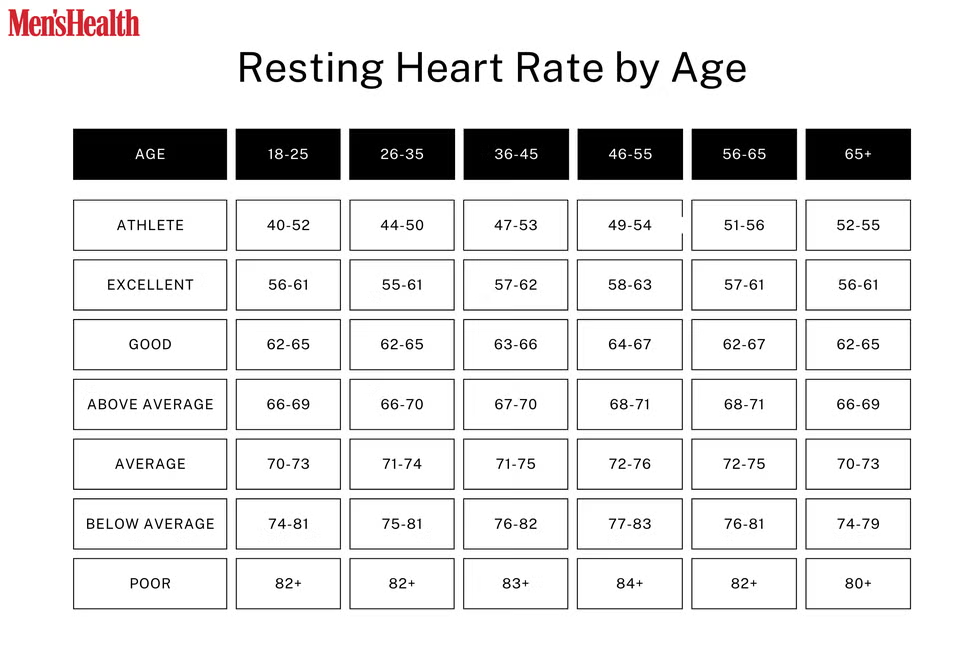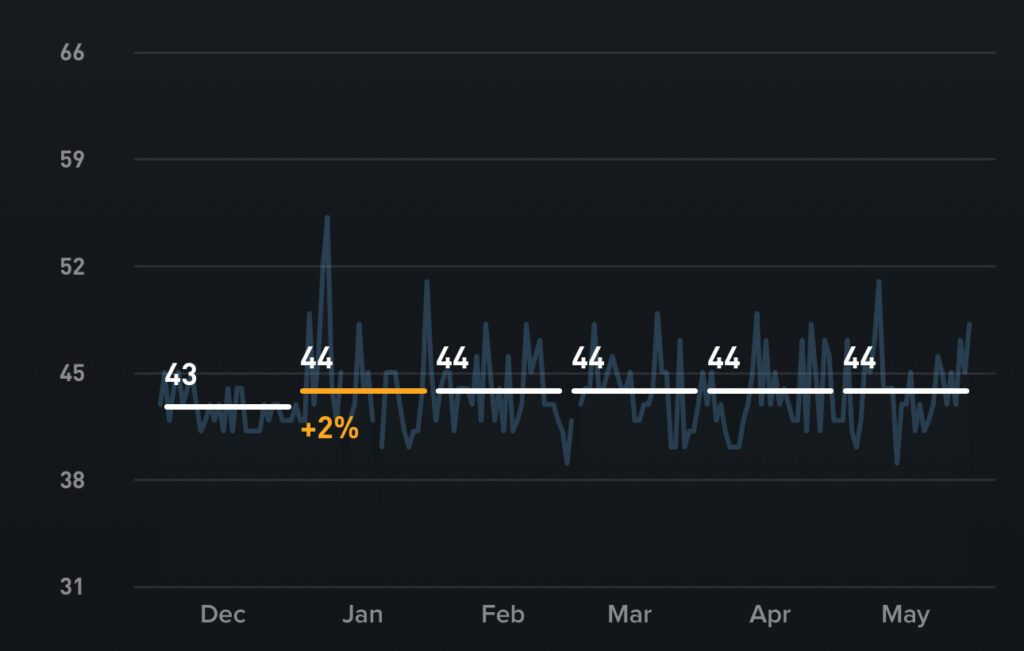In previous articles, I covered VO₂ max, which reflects how efficiently your body uses oxygen, and Heart Rate Variability (HRV), which gives insight into how well your heart responds to stress and change. In this article, I want to revisit the heart but this time focus on what it’s doing when you’re not doing anything: your Resting Heart Rate (RHR).
What is Resting Heart Rate?
As the name implies, Resting Heart Rate is the number of times your heart beats per minute while at rest. It is typically measured after sitting or lying down quietly for a few minutes. It’s a simple but meaningful indicator of how efficiently your heart functions.
Why Resting Heart Rate Matters
A lower RHR generally means your heart is working more efficiently. It’s able to pump enough blood. through your body with fewer beats. In case you’re wondering, blood is the delivery system for oxygen the fuel your muscles need. Having an efficient heart is signs of good cardiovascular fitness.
- Normal range: For most adults, a normal RHR is between 60 and 100 bpm.
- Fit individuals: Well-trained athletes or highly active people often have RHRs in the 40s (some are lower)
- When to check in: If your RHR is consistently above 100 bpm, or below 50 and you’re not very active, it’s worth discussing with a medical professional.
Here is a good chart showing the RHR for different ages and activity types:

Terms You Might Hear
When talking about heart rate, you might come across these terms:
| Bradycardia | Low Heart Rate |
| Tachycardia | High Heart Rate |
| Arrhythmia | Improper Beating |
These can be normal under certain circumstances (like during sleep or intense stress) but may also signal an underlying issue.
RHR and Our Fitness
Having a low RHR is usually a good thing, it speaks to our hearts efficiency. It means when you are at rest the heart is able to get the required oxygen to all your body parts with the least amount of work. It is usually indicative of being fitter. A normal resting heart rate for adults ranges from 60 to 100 beats per minute, while fit individuals can have rates below 40 bpm.
If you’re under 50 but not active, or over 100, it’s worth consulting a medical professional.
Biological factors effecting RHR:
- Age
- Sex
- Overall Fitness
- Medical Condition
Lifestyle and environmental factors effecting RHR:
- Smoking
- Alcohol
- Caffeine
- Stress
- Emotions
- Medications
- Drugs
How Fitness Affects RHR
The most effective, natural way to improve your RHR is through regular exercise. Aerobic and strength training can condition your heart to pump more blood per beat, reducing the number of beats required at rest. Even 30 minutes a day, most days of the week, can yield measurable improvements over time.
As your cardiovascular fitness improves, your RHR will typically trend lower—a sign that your heart doesn’t need to work as hard to keep you going.
RHR is one of the easiest metrics to track and interpret, and it doesn’t require any specialized equipment beyond a smartwatch or even just a timer and your fingers. When combined with VO₂ max and HRV, it can give you a fuller picture of your cardiovascular health and how your body responds to training, recovery, and stress.
Personally, I use my WHOOP to track my RHR. Here’s a look at where I currently stand and how I’ve been trending over the past 6 months:

This chart, pulled from my WHOOP tracker, shows a fairly stable RHR averaging around 44 bpm since January, following a slight uptick from 43 bpm in December. Despite natural variations, the consistency over time suggests a good heart. I think it also reflects the benefits of regular fitness, which just so happens to focus on aerobic and strength training. 🙂
